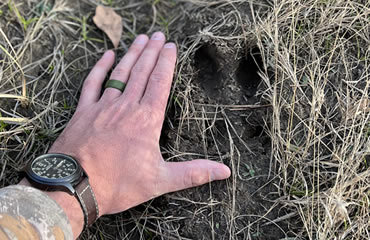We all know what deer tracks look like, but it's amazing how many hunters fail to read the clues in tracks. While some hunters are so adept at reading tracks that they can often determine with amazing accuracy when a particular track is left by a mature buck, there are much more simple things the majority of us can learn from tracks, too. Since deer often use different trails traveling back and forth between bedding and feeding areas, the direction of the tracks will tell you whether to hunt that particular trail in the morning or evening.
Tracks headed back into the cover will indicate a morning stand, while tracks heading to food sources will call for evening stands. Remember, too, that bucks often take the lesser-traveled trails, so look for big, deep tracks on the smallest trails. This could indicate a smart old buck.
And don't forget our old Tip of the Week about sand: If you need information about a particular trail that is on dry, hard soil, find or make a depression and put in an inch or two of play sand. Check it and smooth it over often to learn the travel patterns on that particular trail.
Read Recent Tip of the Week:
• Don't Be Afraid of a Little Water: It's simple but true: If you want to take a big buck, you have to hunt an area that is home to big bucks.




.png)